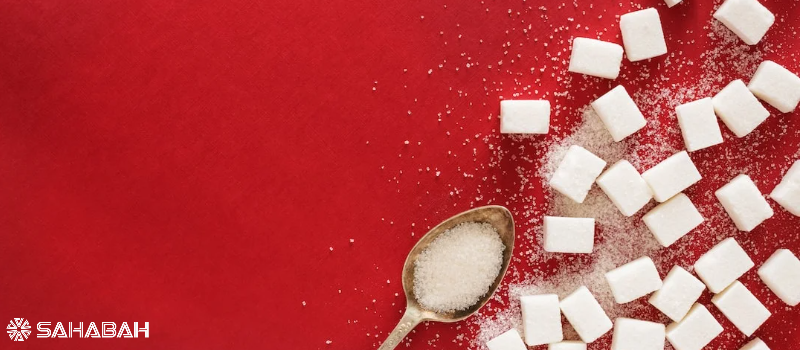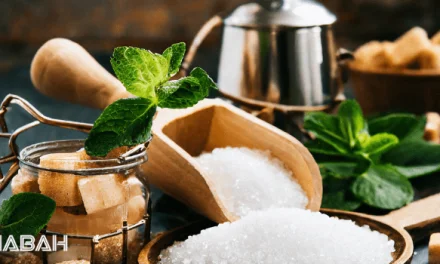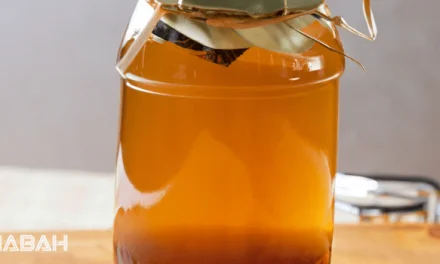Glucose occupies a unique place in kitchen pantries and ingredient lists around the world. Also known as dextrose or d-glucose, this simple sugar is best known for its role in energy production.
In fact, the human body naturally contains about 5 grams of glucose within the bloodstream at all times. This circulating glucose comes primarily from the digestion of carbohydrates. Cells rely on this glucose to fuel essential metabolic functions.
But glucose also moonlights as a versatile food additive. It contributes sweetness, moisture, and texture to products like baked goods, beverages, candies, jams and jellies. Both consumers and industry personnel appreciate glucose for its influence on qualities like texture, shelf life, freezing temperature, crystallization, moisture retention and viscosity.
A Background on Glucose
Glucose belongs to the carbohydrate family, along with sugars like fructose, galactose, maltose and lactose. Specifically, glucose classifies as a monosaccharide. This means its basic chemical structure consists of a single sugar unit.
In nature, glucose most often links together in chains known as polysaccharides. Starch represents one very common glucose-based polysaccharide. Others include cellulose, glycogen, and various fibers.
While pure glucose crystallizes for use as a food additive or sweetener, it also materializes in less concentrated forms. Many fruits, vegetables, grains and starchy plants feature high levels of glucose. Grapes have become especially famous for their glucose content.
Likewise, the digestion of polysaccharide foods liberates free glucose molecules for absorption into the body. This digestive process gives table sugar and many cooked starches their potency.
Where Does Glucose Come From?
Starch Hydrolysis
The most popular method relies on corn starch as the raw material. Producers start by heating corn starch along with water to form a slurry. Next, they introduce enzymes that catalyze the breakdown of the dense starch into smaller glucose units. After further refining, the output exists as either a viscous, sweet [[liquid glucose]] or a purified white powder.
Tapioca starch can substitute for corn starch for those avoiding corn derivatives. Enzymatic treatment splits apart the dense tapioca carbohydrates to generate tapioca glucose syrup.
Wheat also works as a starch source for glucose production. The process entails boiling wheat starch slurry to form a gelatinized mass. Added enzymes then convert the liquefied wheat starch into glucose molecules. These get purified via filtration and crystallization techniques.
Acid Hydrolysis
Some facilities rely on acid hydrolysis rather than enzymes to transform starch into glucose pieces. One method incorporates hydrochloric acid and high heat. The intense reactions break down the starch molecules into smaller sugars. Further steps remove impurities and isolate the glucose product.
Additional Refining Steps
[[Bone char]], or natural charcoal derived from animal bones, sometimes assists with filtering impurities from sugar and glucose products. If the bones originate from pigs, this material would compromise Halal and vegetarian status.
Fortunately, alternatives like activated carbon filtration exist. Responsible vendors utilize these substitute methods to accommodate consumers with religious dietary preferences or vegetarian lifestyles.
Roles for Glucose in Food Production
Glucose-containing ingredients serve numerous functions within product development:
Sweetening – Glucose syrup brings sweetness to foods and drinks without excessive sharpness or intensity. This allows other flavor notes to shine through. Crystalline glucose enhances sweetness further with its pure, concentrated sugar content.
Moisture Retention – Glucose derived additives help retain moisture in items prone to drying out. This quality lends favorable texture and shelf stability. For example, the glucose in a jelly glaze helps keep donuts super moist.
Shelf Life Extension – The humectant properties also prevent premature staling or deterioration. This assists with extending the shelf life of packaged foods. An increase in glucose or glucose syrup within a recipe can replace other ingredients that destabilize quicker.
Freezing Point Depression – Glucose lowers the temperature at which a solution starts to freeze. Ice cream and frozen fruit products leverage glucose’s freezing point depression abilities to attain a smooth, scoopable texture. The glucose content hinders excessive ice crystal formation.
Fermentation Fuel – Yeast feeds on glucose to produce CO2 bubbles and ethyl alcohol. So glucose addition benefits baked goods relying on the leavening power of yeast. The glucose serves as an accessible food source to energize the yeast.
Browning Reactions – Heat triggers browning reactions between glucose and proteins. This results in desirable color development and aromatic compounds associated with fried, grilled or baked foods. Examples include the coveted brown exterior on crusty bread.
Chewiness and Tenderness – Glucose influences texture by interacting with gluten and starches. It can decrease toughness and densify cell structures. The outcome is often a chewy yet tender product with structural integrity. For instance, the choice amount of glucose syrup gives candy gummies their characteristic springy bite.
Viscosity and Body – Solutions rich in glucose tend to demonstrate enhanced viscosity and body. Beverage producers add glucose for noticeable syrupy thickness. Using glucose minimizes dilution from ice without overly masking flavors. It also allows creamy textures for drinks like smoothies or frappes.
Is Glucose Syrup Halal?
Given glucose’s widespread application in the food industry, it’s reasonable for Muslim consumers to question the Halal status of glucose products. Thankfully, glucose enjoys a generally positive reputation in terms of permissibility.
What Constitutes a Halal Product?
According to the [[Quran]], any food categorized as lawful according to Islamic law qualifies as Halal. For ingredients and additives, Halal verification focuses on aspects like origin and chemical transformation.
The highest assurance comes from third party [[Halal certification]]. Qualified Muslim supervisory organizations scrutinize manufacturing protocols for compliance with Halal standards. Certified products will carry recognized Halal labels like the ubiquitous Crescent M symbol.
Glucose Origins and Processing
As covered previously, commercial glucose starts from corn starch, wheat starch or tapioca starch. All three base ingredients have firmly Halal statuses according to Muslim religious authorities.
Furthermore, the chemical means for converting starch to glucose avoid alcohol and animal derivatives. Enzyme action breaks plant starch into its core glucose units via natural processes.
Likewise, charcoal filtration prevents bone char contamination. And verified vendors gladly supply [[glucose syrup]] containing no animal products for devoted Muslim patrons.
Final Determination
Thus, glucose products following typical manufacturing procedures with appropriate quality control monitoring in place can confidently meet specifications for Halal. Many organizations issue certification to validate the Halal integrity of qualified glucose syrups and dextrose powders.
What About Fructose and Other Sugars?
Given the green light for glucose, how do alternate sweeteners compare for Halal compliance? A review of common sugars provides insight:
Fructose – Fruit sugar offers a trusted Halal option. Islamic associations endorse fructose as a preferred sweetening substitute. Fructose crystallizes from fruit juices like dates, grapes and figs. It also occurs in inverted cane sugar solutions.
Maltose – This gentle sugar pairs two glucose molecules together. It develops naturally through grain germination but also emerges from starch hydrolysis. No alcohol gets introduced in commercial processes. Thus, food-grade maltose syrups meet Halal guidelines.
Lactose – Also known as milk sugar, lactose content originates from dairy cattle. No restrictions exist against bovine dairy. Therefore, whey ingredients containing lactose sugars comply with religious dictates.
Sucrose – Table sugar fuses together glucose and fructose molecules. The production pathway introduces no suspicious substances. Hence, ordinary white granulated sugar is classified as a Halal ingredient.
What About Potential Hidden Ingredients?
Skeptical minds might still harbor concerns over undisclosed ingredients or problematic Batch numbers. What other aspects could compromise an otherwise Halal-friendly glucose or sugar product?
Glycerol and Glycerine
Glycerol-based humectants sometimes end up in syrups. If the isolated glycerol relies on animal fats, this poses an issue. Plant and synthetic sources do exist. But since vendors rarely disclose the glycerol origin, prudence suggests avoiding products listing glycerol or glycerine.
Bone Char Filtration
While activated charcoal now dominates as a filtering aid, some facilities yet cling to bone char practices. And the bones likely derive from pigs in most cases. Diligent screening by certification authorities should catch inappropriate filtration methods. Still, certain health brands make a point to advertise bone char-free verification on their labels.
Alcohol Introduction
Theoretically, alcohol could sneak into sugars and syrups via microbes or chemical reactions. However, Halal certification programs specifically monitor production from start to finish to prevent alcohol contamination. Approved products must test completely alcohol-free.
Shared Equipment
Cross-contact poses another potential concern. Even Halal ingredients run the risk of contamination on machinery previously exposed to non-Halal substances.
Thankfully, certification processes evaluate the operational environment. Facilities keeping truly Halal production lines separate from other ventures satisfy official guidelines. Likewise, proper sanitation and changeover protocols minimize the likelihood of carryover issues.
Finding Verified Halal Sugars and Syrups
With all the focus on religious compliance, locating suitable glucose and sugar options still takes diligence. Conscientious shopping aids the mission:
Look for product listings on certified Halal manufacturer sites
Various syrup formulators now maintain Halal practices under official certifications. Browse offerings directly from their eCommerce catalogs for guaranteed options. You’ll see documentation of current certification status.
Search for certification seals from approved Muslim agencies
Certification seals help identify Halal-authorized items during typical retail browsing. Symbols include:
- Crescent M
- Crescent R
- Crescent U
- Square K
Call companies to investigate individual SKUs
If questions remain about specific stock keeping units, don’t hesitate to call the toll-free customer service number listed. Inquire whether they can verify Halal compliance for the precise product formula. First check their website under FAQs in case policies already appear there.
Evaluate manufacturer websites before buying
Responsible vendors will indicate Halal conformance transparently on their “about” or ingredient pages. Look for mentions of certification spanning their facilities, product lines, and quality control initiatives.
Making Your Own Glucose Syrup
After all this talk of commercial manufacturing operations, creating homemade glucose syrup might sound intimidating. However, a simple stovetop method exists for small batch production.
Ingredients
- 2 cups corn starch
- 2 cups water
- 1/2 cup white vinegar
- 1 tsp salt
Instructions
-
Dissolve cornstarch into water in a saucepan. Heat mixture while stirring continuously with a whisk to prevent sticking and clumping.
-
Once the slurry starts thickening to a glue-like texture, add vinegar and salt. Vinegar acidifies the solution to split starch molecules.
-
Continue heating the paste for about 15 minutes, stirring regularly. The liquids will transform to a sticky, sweet syrup as starch converts to glucose sugars.
-
Remove pan from heat and allow the homemade glucose syrup to cool. Transfer to an airtight container. Refrigerate for up to 2 weeks.
Result
The yield is an unrefined and milder tasting glucose syrup. Use it as a topping for desserts or stir into drinks. Keep in mind homemade versions skip filtration steps, so impurities may exist. Size up your tolerance before consuming.
Final Thoughts on Glucose and Halal Diets
In summary, properly sourced and manufactured commercial glucose products generally meet Halal and vegetarian standards. Stick with transparent Halal-certified brands for best results. Consider contacting manufacturers directly with pressing questions.
As always, personal judgments may vary. Some strict followers veto all mass-produced food additives without exception. Hopefully this guide has shed helpful insight on technical details should you prefer absorbing the intimate particulars.
Frequently Asked Questions: Is Liquid Glucose Halal?
Liquid glucose is generally recognized as halal and is permissible for consumption under Islamic dietary laws.
What is the difference between halal liquid glucose and regular glucose?
The main difference lies in the certification. Halal liquid glucose is certified to be produced in compliance with Islamic dietary laws, while regular glucose may not have such certification.
How can I identify if liquid glucose is halal?
Look for halal certification on the packaging or inquire with the supplier to ensure that the liquid glucose is halal certified.
Can dextrose be considered halal?
Dextrose can be considered halal if it is derived from sources that are permissible under Islamic dietary laws and if it has been certified as such.
How do I find a supplier for halal liquid glucose?
It’s important to seek out suppliers who are known for providing halal-certified ingredients. You can check with industry organizations or search for suppliers that specifically offer halal products.
What is the process for determining if glucose is halal or haram?
The determination of whether glucose is halal or haram involves assessing its source, production process, and any certifications that verify its compliance with Islamic dietary laws.
Is maltose syrup considered halal?
Maltose syrup can be considered halal if it is derived from permissible sources and has been certified as halal by recognized authorities.
Can syrup glucose be halal?
Syrup glucose can be considered halal if it meets the requirements set out in Islamic dietary laws and has been certified as halal.
What does it mean for glucose to be considered halal?
For glucose to be considered halal, it must be sourced, processed, and certified in a manner that complies with Islamic dietary laws and is permissible for consumption by Muslims.
Why is it important for liquid glucose to be halal?
It is important for liquid glucose to be halal to ensure that it adheres to the dietary requirements of Muslims and aligns with their religious beliefs regarding permissible food and ingredients.





